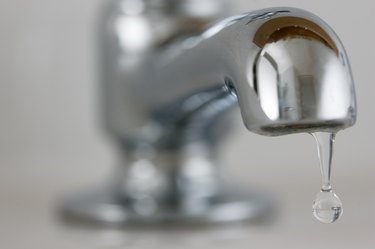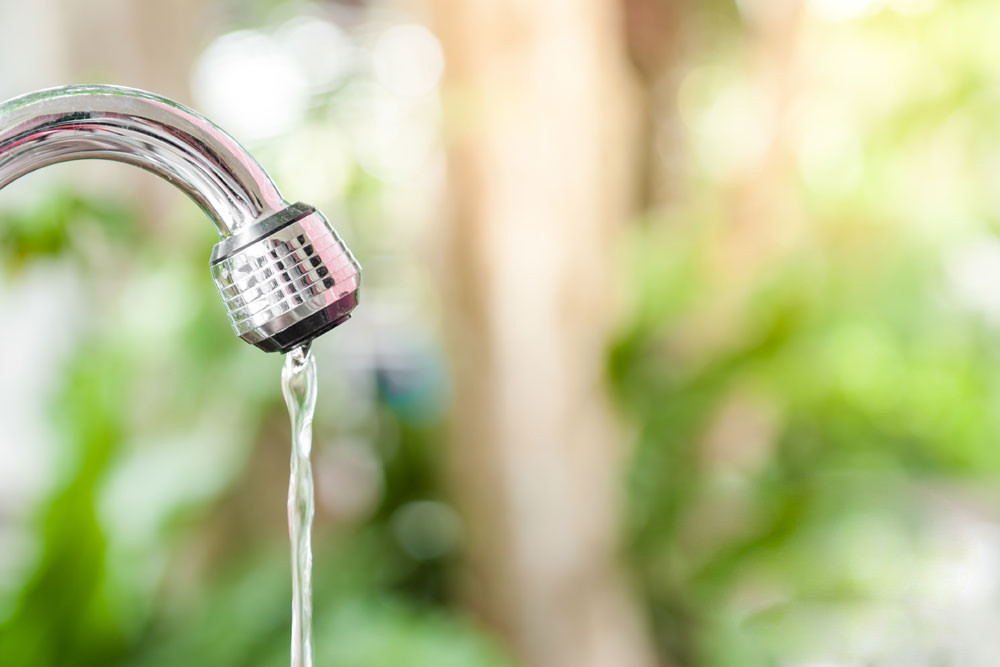The article on the next paragraphs relating to 9 Reasons for Low Water Pressure in Your House is seriously informative. You should take a peek.

Low tide pressure in your home can be a frustrating trouble, impacting everything from showering to washing dishes. If you're experiencing weak water circulation, there are numerous feasible reasons and services to discover. In this overview, we'll discuss common reasons for low water pressure and sensible actions to deal with the issue efficiently.
Intro to Low Tide Stress
Low water pressure takes place when the circulation of water from your faucets, showers, and other fixtures is weaker than normal. This can make day-to-day jobs more challenging and less effective. Comprehending the sources of low tide stress is crucial to finding the right solution.
Usual Sources Of Low Tide Stress
Pipe Obstructions
In time, pipes can come to be obstructed with natural resource, sediment, or debris, limiting the flow of water. This is a common concern in older homes with galvanized steel pipelines.
Corrosion
Deterioration within pipelines can result in leakages and minimized water pressure. Corrosion buildup can restrict water circulation, particularly in aging plumbing systems.
Faulty Stress Regulatory Authorities
Pressure regulatory authorities are in charge of maintaining constant water pressure in your home. If they malfunction, it can cause low water stress or irregular flow throughout your home.
Local Supply Of Water Issues
Sometimes, the issue exists outside your home. Municipal water concerns, such as main line leakages or maintenance job, can momentarily reduce water pressure in your location.
How to Detect Low Tide Pressure
Checking Faucets and Fixtures
Beginning by checking the water stress at various taps and fixtures throughout your home. If the problem is separated to details locations, it may indicate local issues.
Inspecting Pipelines
Examine noticeable pipes for indications of leaks, deterioration, or obstructions. Focus on any unusual sounds, such as banging or rattling pipelines, which can indicate concerns within the plumbing system.
Consulting with a Plumber
If you're not able to identify the reason for low tide pressure, think about employing an expert plumber to perform a detailed evaluation. They can identify underlying issues and recommend suitable services.
DIY Solutions to Deal With Low Tide Pressure
Cleansing Aerators and Showerheads
Natural resources can gather in aerators and showerheads, reducing water circulation. Get rid of and cleanse these components frequently to enhance water pressure.
Flushing Hot Water Heater
Sediment buildup in the water heater can limit flow and lower effectiveness. Purging the tank occasionally aids get rid of sediment and keep optimum efficiency.
Checking Pressure Regulatory Authority
Guarantee that the stress regulatory authority is working appropriately. Adjusting or changing the regulator can help recover proper water stress throughout your home.
Clearing Clogs in Pipeline
For minor clogs, attempt making use of a plumbing serpent or chemical drainpipe cleaner to clear blockages in pipelines. Be cautious when using chemicals and follow safety guidelines.
When to Call a Specialist Plumber
If do it yourself efforts fail to resolve the issue or if you believe substantial plumbing troubles, it's finest to look for support from a qualified plumber. They have the competence and devices to attend to complex problems securely and efficiently.
Preventive Measures to Preserve Water Stress
Normal Upkeep
Arrange regular maintenance for your plumbing system to prevent issues such as deterioration, leaks, and obstructions. Dealing with small troubles early can assist stay clear of more considerable fixings later on.
Installing a Pressure Booster
Think about mounting a stress booster pump to boost water stress in locations with consistently low flow. This can be especially advantageous for multi-story homes or buildings with high-demand components.
Surveillance Water Use
Bear in mind water usage practices and avoid overtaxing the plumbing system. Straightforward changes, such as staggering showers and washing tons, can help maintain ample water stress.
Conclusion
Dealing with low tide pressure can be frustrating, yet determining the underlying reasons and carrying out appropriate remedies can bring back optimal circulation throughout your home. Whether it's cleaning aerators, checking pipes, or seeking advice from a plumber, taking positive actions can guarantee a constant supply of water for your daily requirements.
How to Fix Low Water Pressure In Your Home
Municipal Water Supply Issues
Scheduled maintenance, high demand, and water main breaks are all potential causes for low water pressure within a city or county’s water lines. While there’s not much you can do to personally fix a problem with your city or county’s water supply system, you can play a big role in documenting the issue and alerting those who can.
How to fix it:
Ask your neighbors if they are experiencing any issues with low water pressure. If multiple homes are affected, it’s likely related to the city’s water line.
Contact the local Water Authority to see if there is any maintenance taking place that might be affecting your supply. Also let them know of your specific issues. If other homeowners report the same issues, they’ll know that there could be a larger issue to look into.
Faulty Fixtures
A damaged or clogged shower head, faucet or appliance is the first thing we’d suggest checking, especially if low water pressure appears to be isolated to a specific area of your home.
How to fix it:
First, turn off the main water supply to your home.
Check the affected appliances for build-up or debris. In the case of a faucet, you can simply unscrew the aerator at the tip of the faucet. Showerheads should be fully detached from the water pipe.
While the appliances are detached, you may want to check the water supply to determine if the fixtures were in fact the issue.
To clean, soak the showerhead or aerator in vinegar and brush off any visible debris.
Reattach the fixtures and check the water pressure again. If it is still low, there is likely a deeper issue at hand, which can be determined by a professional plumber.
Pipe Obstructions
Mineral deposits, rust or other debris within water pipes can lead to blockages or corrosion over time.
How to fix it:
When you think of a clog, you probably think of a drain clog. While there are many DIY solutions to clearing a drain, clogs in a water pipe will almost always require the help of a professional plumber. A plumber will be able to locate the affected pipe and clean out any debris or mineral deposit buildup. In severe cases, the pipe may need to be replaced. Your plumber might also recommend a water softening system to remove the minerals from your home’s water supply that can contribute to pipe blockages over time.
Plumbing Leak
Undetected water line leaks can divert water away from your residential pipes, reducing the water pressure in your fixtures.
How to fix it:
Check your water meter by turning off all water sources and monitoring the meter for any movement, which could be a clear indicator of a potential leak.
Check all visible pipes for signs of leaking, including water stains, active dripping or damp spots around the pipe.
Inspect fixtures, including faucets and showerheads, for any drips.
Test the pressure but recording the pressure with the main water valve shut off. Leave off for a few hours and test again. A significant drop in pressure is a clear sign of a leak.
https://kiddcoplumbing.com/plumbing-blog/how-to-fix-low-water-pressure/

How to Fix Low Water Pressure In Your Home
Municipal Water Supply Issues
Scheduled maintenance, high demand, and water main breaks are all potential causes for low water pressure within a city or county’s water lines. While there’s not much you can do to personally fix a problem with your city or county’s water supply system, you can play a big role in documenting the issue and alerting those who can.
How to fix it:
Faulty Fixtures
A damaged or clogged shower head, faucet or appliance is the first thing we’d suggest checking, especially if low water pressure appears to be isolated to a specific area of your home.
How to fix it:
Pipe Obstructions
Mineral deposits, rust or other debris within water pipes can lead to blockages or corrosion over time.
How to fix it:
When you think of a clog, you probably think of a drain clog. While there are many DIY solutions to clearing a drain, clogs in a water pipe will almost always require the help of a professional plumber. A plumber will be able to locate the affected pipe and clean out any debris or mineral deposit buildup. In severe cases, the pipe may need to be replaced. Your plumber might also recommend a water softening system to remove the minerals from your home’s water supply that can contribute to pipe blockages over time.
Plumbing Leak
Undetected water line leaks can divert water away from your residential pipes, reducing the water pressure in your fixtures.
How to fix it:
https://kiddcoplumbing.com/plumbing-blog/how-to-fix-low-water-pressure/
We hope you enjoyed our topic on 9 Reasons for Low Water Pressure in Your House. Thanks so much for spending some time to read through our piece of content. Sharing is good. Helping people is fun. I am grateful for being here. Return soon.
See Availability